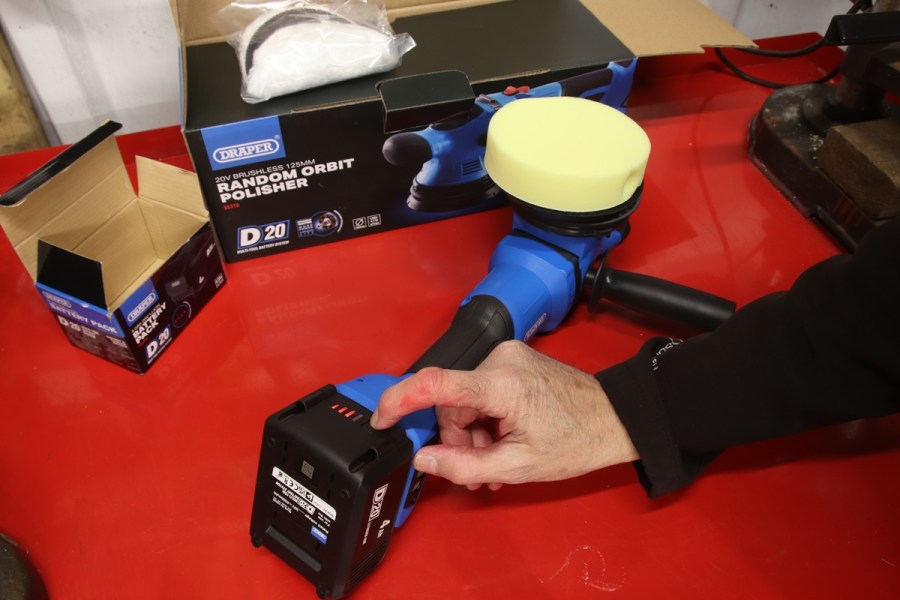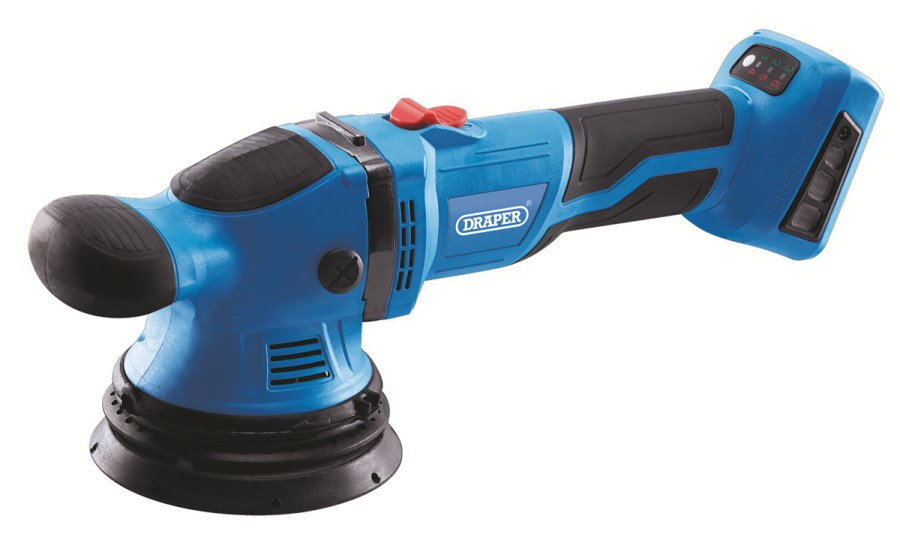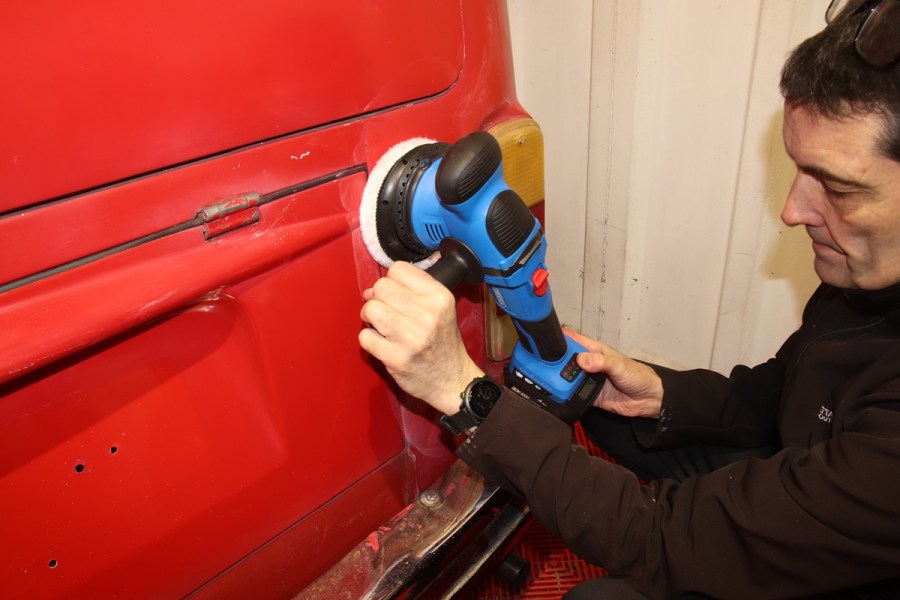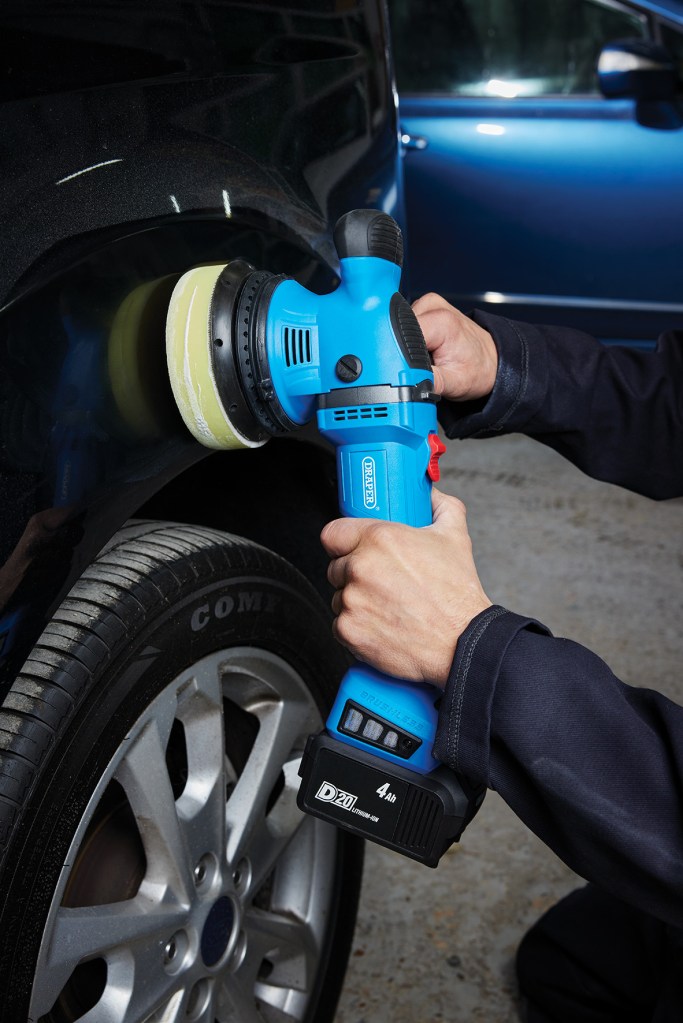Draper’s range of 20V tools (known as the D20 range) includes an angle grinder, drill, sander, a circular saw and this random orbit polisher. It has a brushless motor, so it should apply car polish in a quieter and smoother manner than those polishers with a brushed motor. And the brushless design means there are less parts to wear out. This Draper D20 Random Orbit Polisher review puts the theory into practice.
If you already have some of Draper’s D20 tools, then you probably won’t need to buy a battery and charger. So the cost of a body only can be quite reasonable. Otherwise, look for bundle deals instead of buying the battery and charger separate.
RRP: £144.75, buy it here.

What’s in the box?
This polisher is supplied in a cardboard box, with no carrycase or bag. We acquired a battery and charger, both of which were supplied in cardboard packaging.
A hook and loop backing pad is already fitted to the polisher. It can be removed with a Hex tool that’s included. However, it can be left fitted because it’s needed for using the supplied 125mm-diameter sponge pad and polishing bonnet. A handle is included, which is attached to either side of the body – a plastic screw needs to be removed.
There’s a button on the side of the battery, which if pressed, shows the status of its charge. This is useful for knowing when it’s ready to recharge. It should take between 30 and 45 minutes, depending on which battery is fitted (they range from 2Ah to 5Ah).

Tech Spec
There are six speed settings for this polisher, starting at 1,600rpm. The fastest speed is 4,710rpm.
The speed settings are displayed in three pairs of red and green numbers along the base of the body with a soft-press button below them. Providing a battery is fitted, pressing the button switches between the different pairs of speed settings, with a light illuminating red or green to signify which setting is chosen. It all makes more sense when you start using the polisher and press this speed setting button to change the rotation speed.
Being a random orbit polisher, the motor doesn’t just rotate, but it also orbits by 15mm. This helps to reduce the risk of swirl marks, creating a greater variance in its pattern of movement.

Using the Draper D20 random orbit polisher
A large red plastic slider switch on the top of the polisher’s body switches on the motor. It doesn’t start spinning gradually, but instantly fires up to whatever speed setting is selected. So it’s wise to start on the slowest setting.
The plastic switch feels a little flimsy and amateurish when compared to a trigger that’s used on most polishers. The switch can be locked by pushing it fully forwards. This means you don’t have to keep it held whilst using the polisher.
It’s a little awkward to change the speed settings. And you can only increase the speed, not decrease it. So you have to get to the maximum speed setting to start again at the slowest.
The weight of this polisher is quite light at almost 6lb (2.7kg) is light. It feels balanced and easy to maneuver over paintwork.
With a sponge pad attached to the hook and loop backing pad, I applied a color restorer to sun-damaged paintwork. It was quickly and easily revived, then polished with the polishing bonnet. This polisher from Draper was easy to operate.

Verdict
This polisher from Draper can be a value for money investment, if you already have the battery and charger. Otherwise, unless you find a bundle deal, it can prove expensive.
The range of speed settings could do with being a little lower for polishing. There’s no progressive start-up for the brushless motor. And no means of reducing the speed without increasing to the maximum setting and starting again.
See how it stacks up against its rivals in my machine polisher group test.



